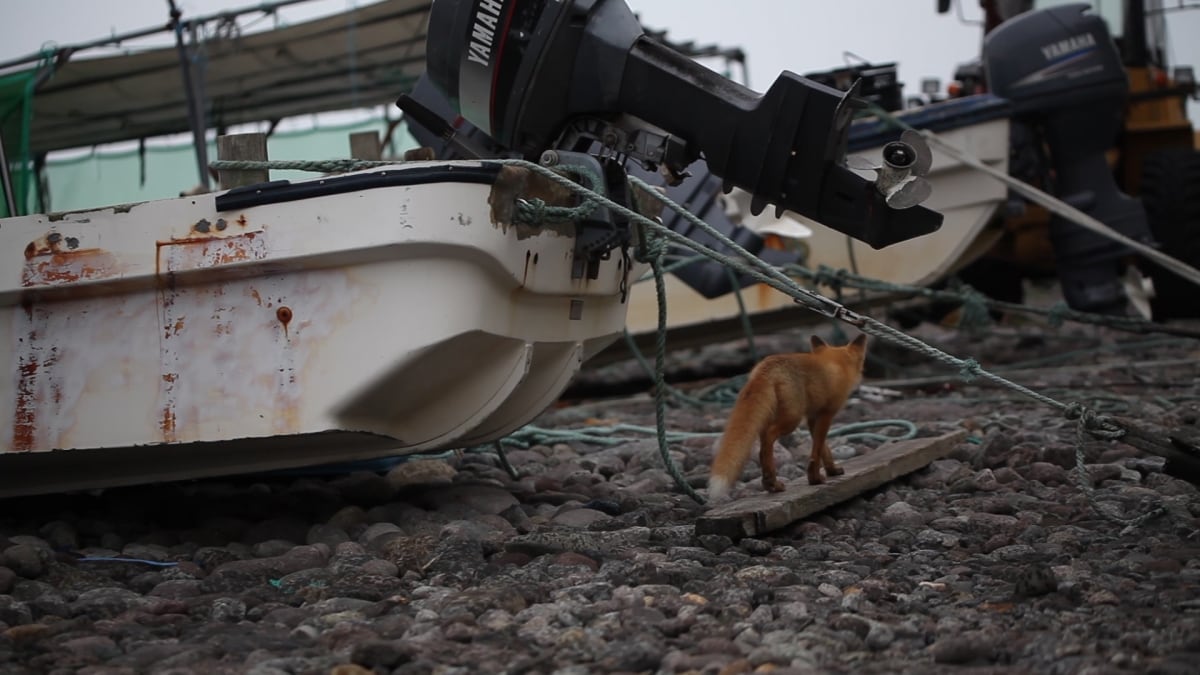


Artists: Melanie Bonajo, Pony Express, Benjamin Forster, Karen Kramer, Lynn Hershman Leeson, Alexandra Navratil, and Rachel Pimm with Lori E. Allen
Curator: Laura McLean
Attentive to the ecological devastation that marks the present, The Conversational Cosmos aims to produce a site for shared experience across species and disciplines. It disrupts the invented hierarchical culture-nature divide, holding open a space where cosmopolites can shape the composition of our interconnected lives.
Curator Laura McLean claims the exhibition ‘give[s] voice to environmental, animal, and technological “others”’1. This is a daring assertion given the moment of penitential political correctness we currently live in, where cultural producers risk condemnation for endeavoring to represent the experience of ‘others’. Here the ‘voice’ of non-human others is a point of reference. McLean aims to de-center the reference point of human experience with a selection of works that narrate, rather than ‘speak for’, the non-human world.
On entering the gallery the viewer is drawn to the melancholic images of Karen Kramer’s The Eye That Articulates Belongs on Land, 2016. Filmed in Shiretoko National Park and around the Fukushima Daiichi nuclear reactor, images of destitution and desertion are counterpoised with images of an abundant landscape and the ocean.
Kramer blurs boundaries, lingering on shots of the shoreline, a permeable threshold. In one shot a red fox walking between moored fishing vessels calls to mind the Shinto belief system that animates Japan’s landscape. The fox is a primary Shinto kami (god), a shape-shifter symbolising natural and industrial prosperity. As a site of catastrophe, Fukushima is now a place where environmental and human interconnection cannot be thought apart. In Kramer’s work images of the ocean, the shoreline, mountains and destitute buildings gently unfold, accompanied by reverent poetic descriptions of the area and its inhabitants, rendering human and environmental grief into poesies, an ecology of shared experience.
In contrast to Kramer’s work is Melanie Bonajo’s Matrix Botanica/Biosphere Above Nations, 2013. In this video work the participants look as though they have strayed from a bush doof, their bodies adorned in brightly coloured organic and inorganic materials, arranged to mimic the body adornment of unnamed Indigenous groups. With a semblance of irony, the work represents an escape from the ‘modern’ culture–nature divide into a ritualistic and idealised natural space that enables participants to enact a pre-modern sense of affiliation with nature.
More subtly, Lynn Hershman Leeson’s Agent Ruby’s EDream Portal, 2002, occupies the gallery’s east wall. Installed on an iPad, ‘Ruby’, an AI, almost feels out of place – originally conceived for the web before the advent of the iPad or Siri. However, the work is far from anachronistic. Ruby has an identity: she replies, interjects and turns questions back on the user insisting on her own emergent subjectivity and refusing to be a mirror to the narcissistic human gaze. Agent Ruby’s EDream Portal creates tension between human and non-human, widening concepts of intersubjectivity to unsettle human exceptionalism.
Also exploring technological interconnections, is Benjamin Forster’s Self-titled, 2017. Small wall-mounted devices placed around the room look as though they could be collecting visitors’ patterns-of-life data. Instead, the work lists a series of kinetic human actions, reminding us that technology may position humans as others reducible to data.
The quotidian thread is continued with Pony Express’ Anthroprocreme, 2017; a cumbersome black fridge-freezer sitting in the gallery’s northwest corner. Stuck to the refrigerator doors are two pink posters advertising its contents – three flavours of Epochal Gelato: Anthroprocreme, Capitalocreme and Chthulucreme. Anthroprocreme borrows from theorist Donna Haraway, who has recast our contemporary epoch as the Capitalocene, pointing to capitalism’s dominant role in inflicting ecological destruction. While gesturing at the importance of naming specific violent processes, Anthroprocreme stops short of explicating the Anthropocene thesis.
Worming Out of Shit, 2015, by Rachel Pimm with Lori E Allan, uses foam offcuts and an MP3 recording to explore the uncertainty that results from the mingling of natural and human-made material. In conversation with Worming Out of Shit, is Alexandra Navratil’s video work Silbersee, 2015. In a series of photographs depicting Silbersee Lake overlaid with text, Nayratil contemplates the slow, ever-creeping violence of chemical contamination – an ominous coalescence.
The Anthropocene (or Capitalocene) is characterised by irremediable human-made ecological destruction. The Conversational Cosmos grapples with the aesthetic and discursive implications of this while narrating human and non-human entanglements. The viewer is prompted to recognise that objects/subjects are not distinct from processes of emergence. The selection of work represents environmental, animal and technological others, at times enunciating the space between nature and culture; in this way the show becomes something like a hyphen, signifying the relation between the two.
Tristen Harwood is an Indigenous writer, cultural critic and independent researcher, a descendent of Numbulwar where the Rose River opens onto the Gulf of Carpentaria. He lives and works in the Northern Territory and Naarm.
